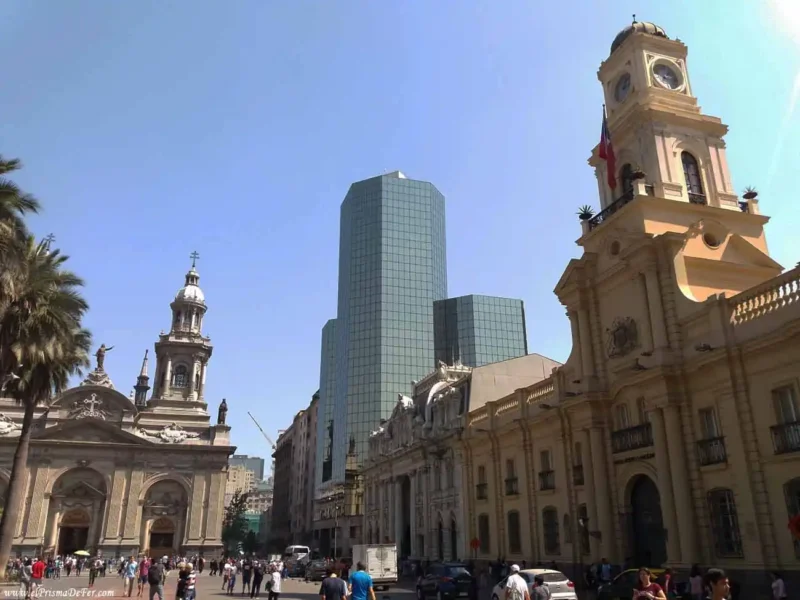Valparaíso is one of those cities that seem made to get lost among alleys, murals and hills full of life. With its bohemian, artistic, and somewhat chaotic atmosphere, this Chilean port city leaves no one indifferent. Its colorful houses perched on the hillsides, the elevators that go up and down the hills, and the contrast between the old and the new give it a unique personality, unlike any other city in the country.
I also took the opportunity to visit Viña del Mar, a city very different from Valparaíso but which perfectly complements the trip. Known as the "Garden City," Viña del Mar has a more organized feel, with wide avenues, parks, and a beachy atmosphere that contrasts sharply with what Valparaíso has to offer.
Spending a day exploring its beaches, strolling, and enjoying the viewpoints is a great way to discover another side of the Chilean coast.
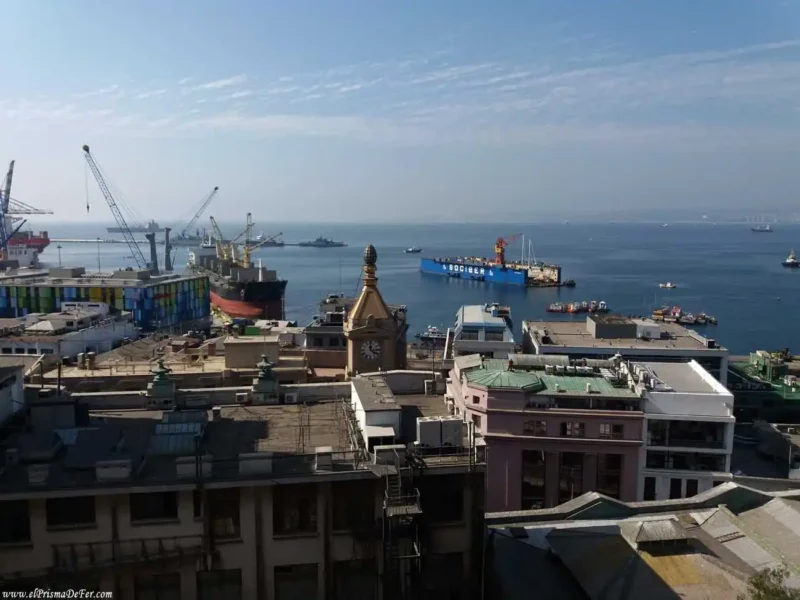
Table of Contents
The importance of Valparaíso for Chile
Valparaíso is not just a picturesque tourist destination; it is also a city of enormous historical, cultural, and economic significance for Chile. Its port, one of the most important in the country, has been the gateway to international trade for centuries, connecting Chile to the world and facilitating the region's economic development.
The city is also an epicenter of art and culture, with festivals, museums, and a vibrant mural scene that led to its declaration as a UNESCO World Heritage Site in 2003.
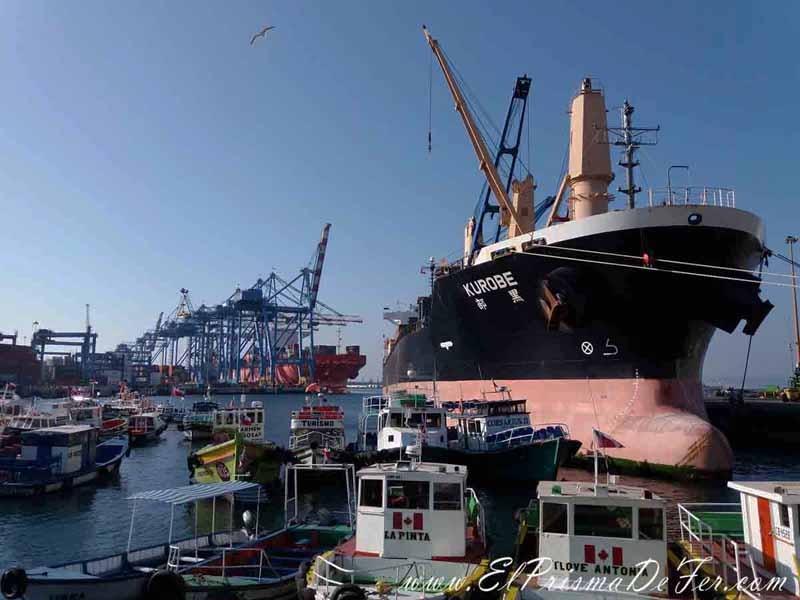
But beyond its historical and cultural significance, what makes Valparaíso so captivating is its atmosphere. It's a place where street art takes center stage, where there's always a hidden café, bar, or gallery waiting to be discovered, and where every walk can end at a lookout point overlooking the Pacific Ocean.
The Viña del Mar Festival
One of the most famous events in Chile and all of Latin America is the Viña del Mar International Song Festival. Held every summer in Quinta Vergara, usually during the second half of February , it brings together world-class artists alongside musical competitions that have launched many of the region's singers to fame. Beyond the musical aspect, the festival has become a true television spectacle, attracting thousands of visitors and viewers, both Chilean and foreign.
Although I didn't attend the festival during my visit, it's impossible to talk about Viña del Mar without mentioning it. If you're planning to travel in February, keep in mind that accommodation prices can be quite high, so it's a good idea to book in advance.
How to get from Santiago to Valparaíso and Viña del Mar
The easiest way to get from Santiago to Valparaíso or Viña del Mar is by intercity bus. Buses leave very frequently (every 15–30 minutes) from the Alameda, Pajaritos and San Borja terminals. The journey takes around 1 hour and 45 minutes to Valparaíso and about 15 minutes longer if your final destination is Viña del Mar.
The best-known companies that operate this route are TurBus and Pullman Bus, with affordable fares and frequent service throughout the day. The buses are comfortable, some even offering a sleeper cabin option, although it's not really necessary for such a short trip.
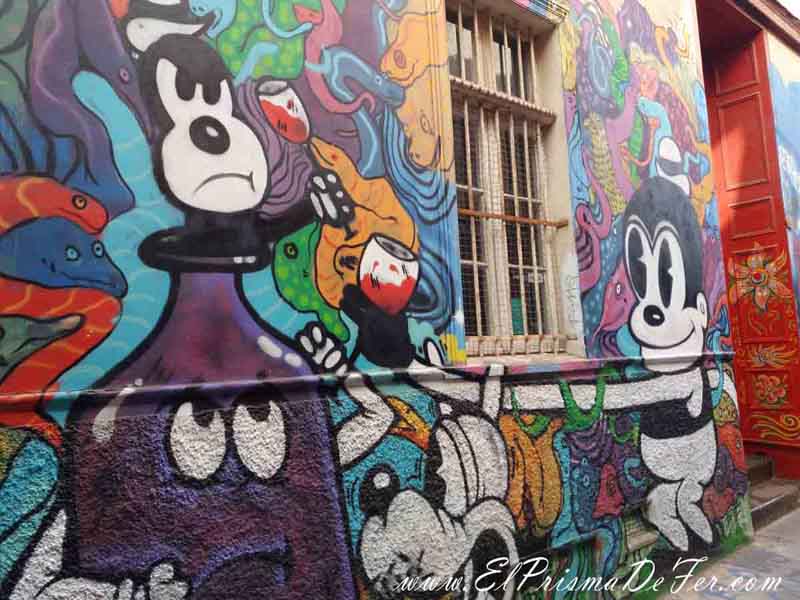
Once in Valparaíso, you can walk from the bus terminal or take buses and elevators to reach the main hills. If your destination is Viña del Mar, the terminal is very close to the city center and the waterfront, making it easy to get around on foot or by public transportation.
By car, the trip is also direct: take Route 68, which connects Santiago with the coast in approximately 2 hours. The advantage is that you can stop along the way in places like the Casablanca Valley, famous for its vineyards.
Map with attractions to see in Valparaíso and Viña del Mar
What to do in Valparaíso
Walk through the Alegre and Concepción hills
These are the most picturesque and touristy neighborhoods in Valparaíso, ideal for leisurely strolling and soaking up their bohemian atmosphere. Their steep streets are filled with colorful houses, charming hostels, cafes with outdoor seating, art galleries, and murals that transform every corner into a kind of open-air museum.
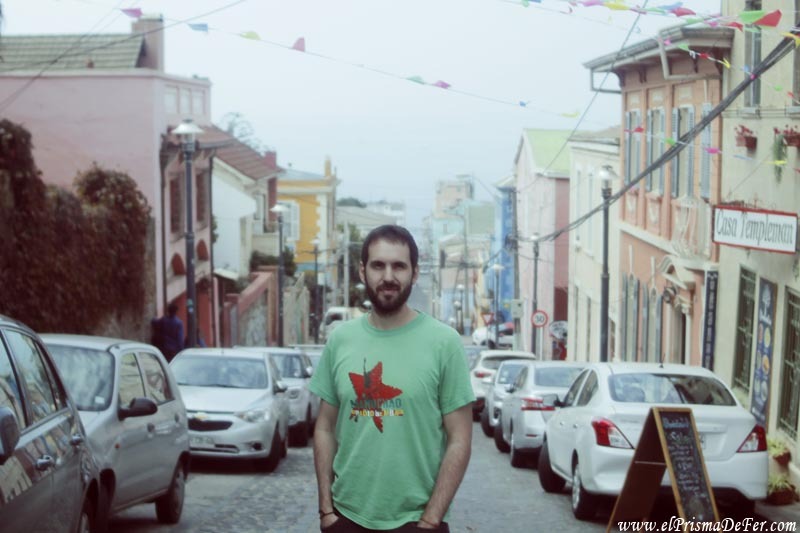
One of the best ways to explore them is to walk through their decorated passageways and staircases, such as the famous Dimalow Promenade or the Bavestrello Passage. Viewpoints such as Gervasoni Promenade or Atkinson Promenade offer spectacular views of the port and the surrounding hills, perfect for taking photos.
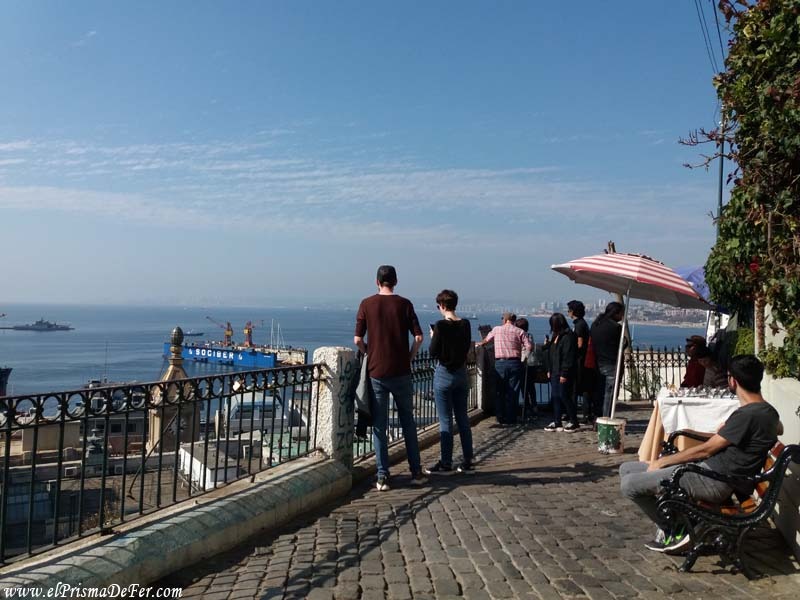
In these hills, you'll also find small shops selling local designs, bookstores, and artists' studios, making them a great place to pick up a unique souvenir. The gastronomy isn't far behind either: there are restaurants serving typical Chilean dishes and international cuisine with terraces offering unique views.
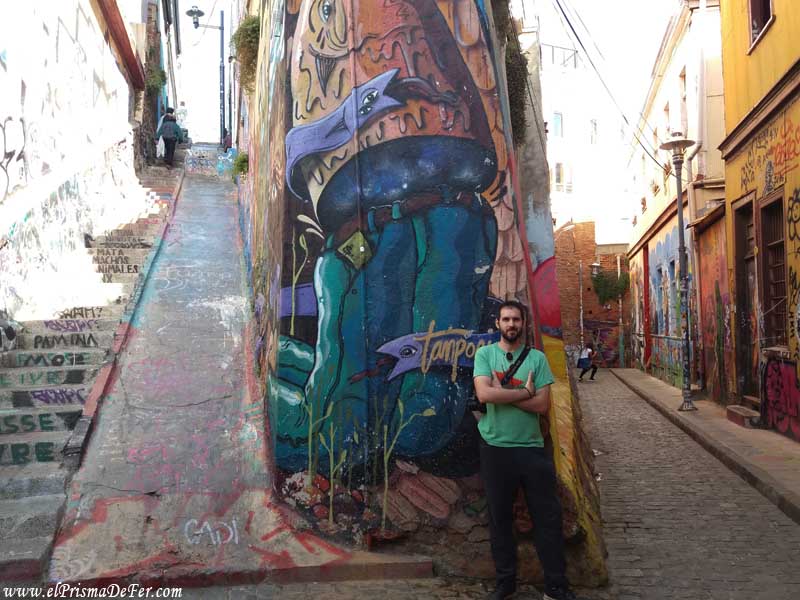
Touring Cerro Concepción and Cerro Alegre is, without a doubt, one of the must-see experiences in Valparaíso, because they reflect the artistic and cultural essence of the city.
Ride the historic elevators
Valparaíso has several elevators (funiculars) that connect the lower part of the city with the hills. Although some are no longer operational, several can still be used, such as the Reina Victoria Elevator and the Artillería Elevator. In addition to being a practical means of transportation, they are part of the city's living history.
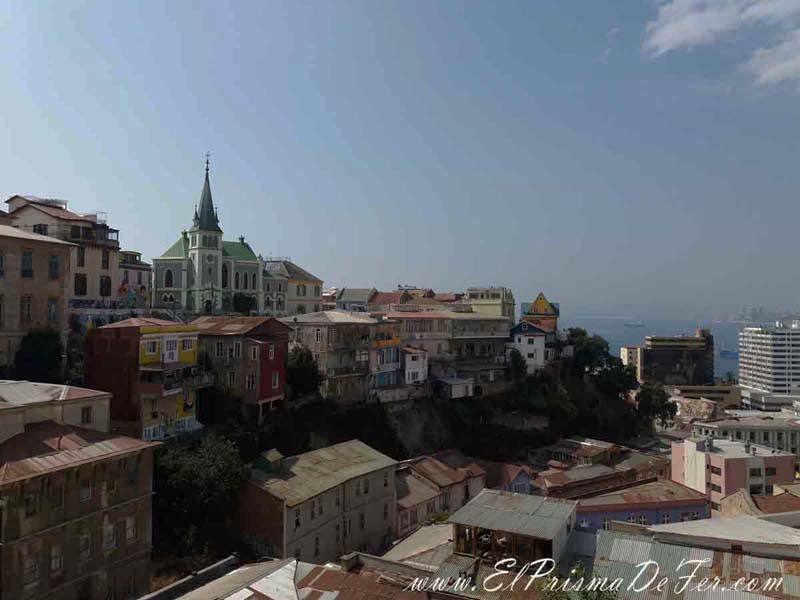
Admire street art
Street art is one of Valparaíso's biggest draws, giving it such an authentic, bohemian feel. The city's streets and stairways are an open canvas where local and international artists have left their mark.
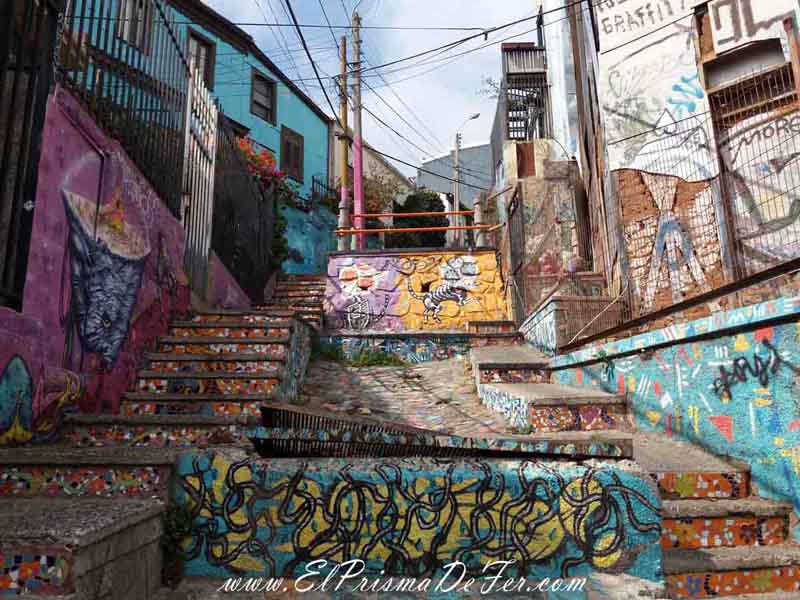
Some unmissable murals are:
- The “Peace and Love” on the Templeman Staircase, one of the most photographed.
- The “Colorful Cat” mural in the Fischer Passage.
- The “We are not hippies, we are happies”, which has become almost an icon in Cerro Alegre.
- The works of Chilean artist Inti Castro, with colorful Andean-style characters that appear in different corners of the city.
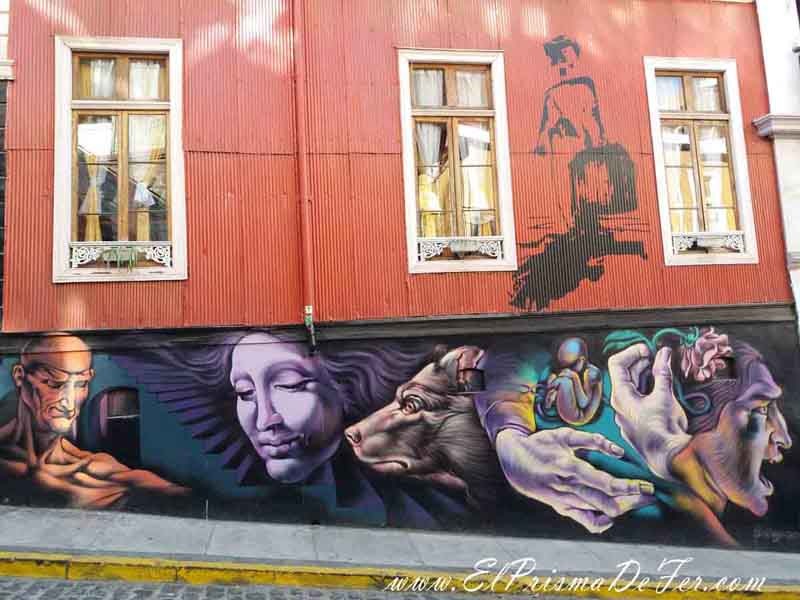
Each alley offers a different surprise, and it's best to wander aimlessly. There are also guided street art tours that help you better understand the history and message behind the works.
Visit La Sebastiana, Pablo Neruda's house
One of the most iconic places is Pablo Neruda's house-museum in Valparaíso. Inside, you can see the curious objects the poet collected, while its windows offer spectacular views of the city and the sea.
Walk through the port and Plaza Sotomayor
The port area is the historic heart of Valparaíso. Plaza Sotomayor, with its imposing monument to the heroes of Iquique, is a good starting point for exploring the neighborhood. From there, you can also take boat trips to see the city from the sea.
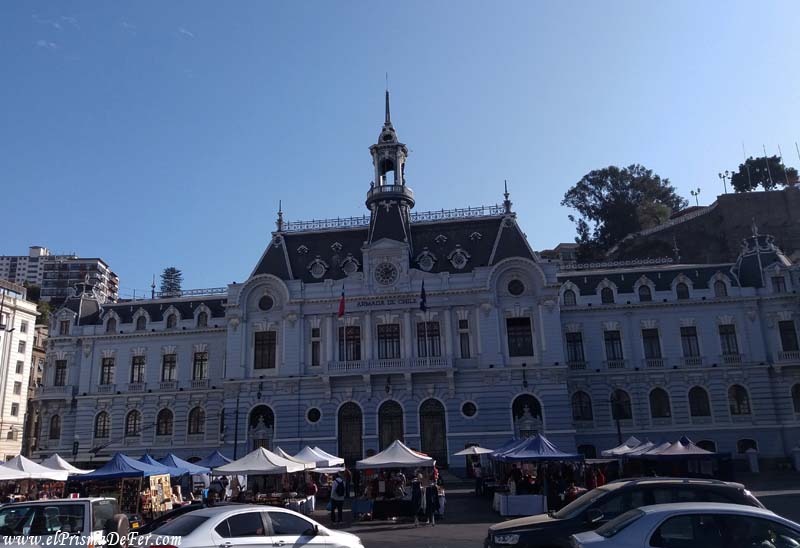
Visit the El Cardonal market
A classic for those who enjoy local life. This market sells fruits, vegetables, seafood, and other fresh produce. On the second floor, there are also soup kitchens where you can try Chilean food at a good price.
Climb Artilleria Hill
From this hill, you can enjoy one of the best panoramic views of the port and the city. The Artillery Elevator takes you directly to the top, where the National Maritime Museum is also located, interesting for those who want to delve deeper into Chilean naval history.
Where to sleep in Valparaíso
The best area to stay in Valparaiso is undoubtedly the most touristy hills, such as Cerro Alegre and Cerro Concepción. These are home to hostels, boutique hotels, and stylish apartments surrounded by murals, cafes, and restaurants with terraces offering views of the port and the city. It's a very picturesque area, ideal for walking and enjoying street art without being far from the main attractions.
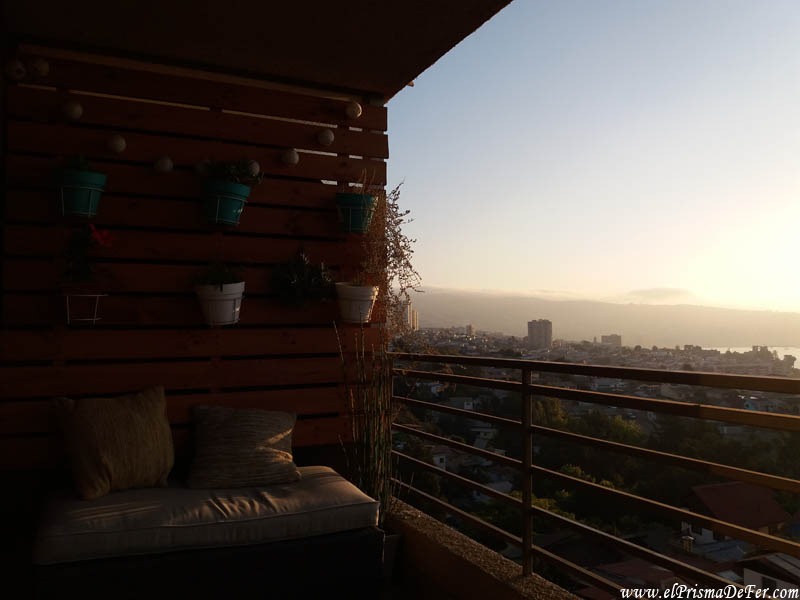
If you're looking for a more backpacker-friendly, budget-friendly atmosphere, you'll find youth-friendly hostels and shared spaces where it's easy to meet people.
However, if you prefer more tranquility and comfort, there are boutique hotels located in restored old houses, which maintain that heritage feel so typical of Valpo.
Another option is to stay in the city center, near Puerto station, although I personally didn't like the nightlife as much.
Activities organized from Valparaíso
Getaway to Viña del Mar from Valparaíso
Just 15 minutes by bus or metro from Valparaíso is Viña del Mar, known as the "garden city." It's the perfect complement for visitors to Valparaíso, offering a complete contrast: while Valparaíso is chaotic, colorful, and bohemian, Viña del Mar is more organized and has a more beachy feel.
It's ideal to dedicate at least a full day if you plan to relax on the beach or explore it at a leisurely pace. Viña del Mar and Valparaíso are so close and connected that they can be easily visited on the same trip.
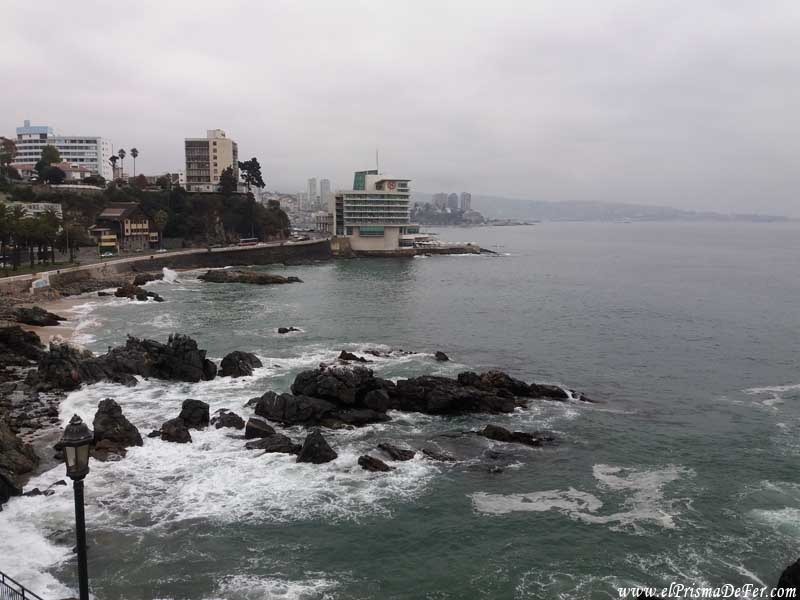
How to get between Valparaíso and Viña del Mar
The good news is that Valparaíso and Viña del Mar are very close: just 10 km separate them, so it's easy to combine them in a single trip. The most comfortable and economical option is the Valparaíso Metro (Merval), which connects both cities in about 15 minutes. Trains are frequent, safe, and have several stops in between.
Another alternative is the local buses, which depart constantly from different points in Valparaíso and arrive in the center of Viña del Mar. They are a little slower due to traffic, but very cheap and useful if you want to get off at an intermediate stop.
You can also opt for a remis or transportation app like Uber, although the cost will be considerably higher. My recommendation is to use the metro: fast, reliable, and the best way to get between these two coastal cities.
What to do in Viña del Mar
Viña del Mar, known as the "Garden City," is one of Chile's most popular tourist destinations and a favorite for visitors to the central region. With beaches, gardens, viewpoints, and historic buildings, it offers a variety of options for relaxing, exploring, and exploring interesting places.
Flower Clock
One of Viña del Mar's most photographed icons. This clock, created with natural flowers that change with the seasons, is located at the foot of Castillo Hill and has become a symbol of the city. It's a place to stop, take photos, and stroll through the surrounding area.
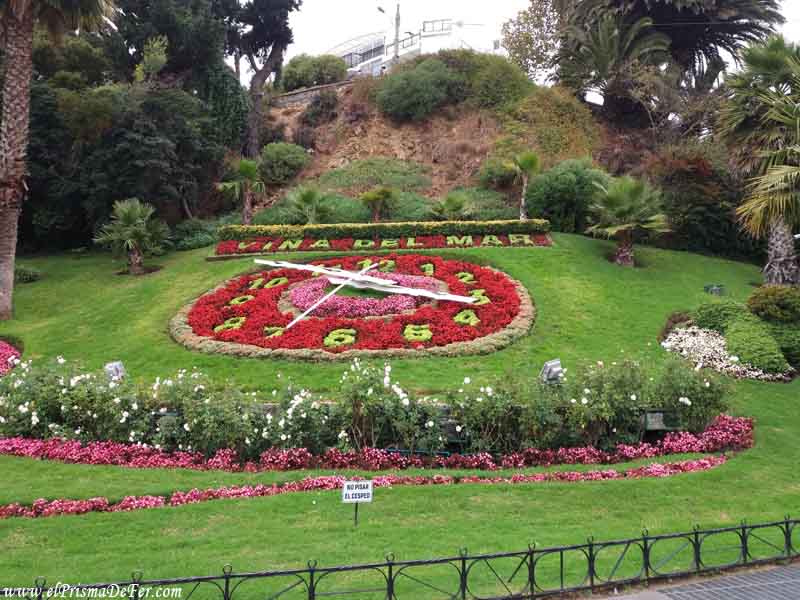
Wulff Castle
Located on the seafront, this European-style castle, built at the beginning of the 20th century, is another of Viña's landmarks. In addition to its striking architecture, it functions as a cultural center and often hosts temporary exhibitions. The setting, with the waves crashing against the rocks, gives it a special charm.
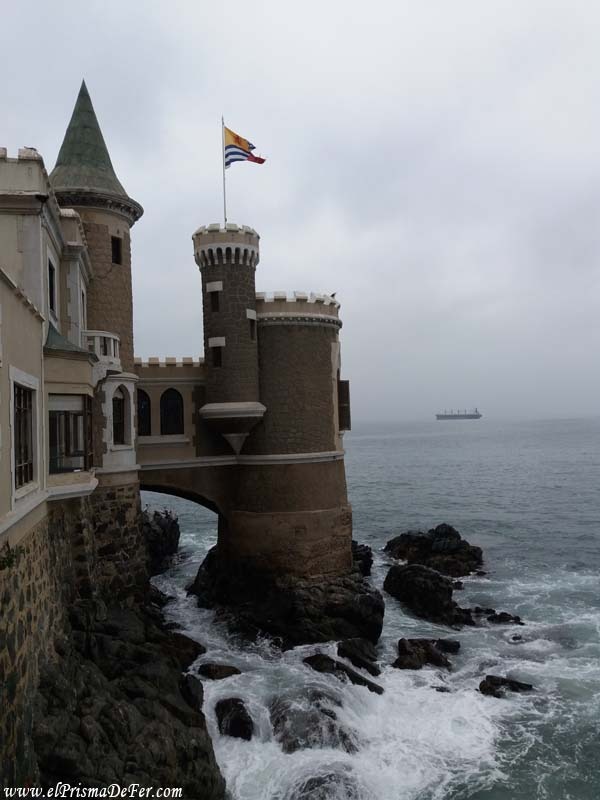
Urban beaches
Viña del Mar has several beaches where you can enjoy the sun and the sea, although caution is advised as the currents are often strong. Among the most central beaches are Playa Acapulco and Playa El Sol, which are very popular in summer, with services, restaurants, and a lively atmosphere.
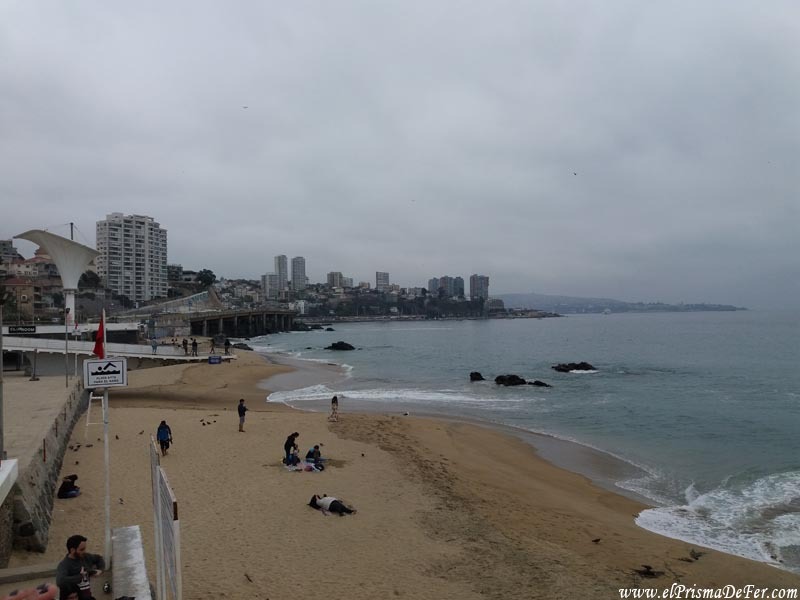
Concón Dunes and Ocean Rock Lookout
Just a few kilometers from Viña, in the neighboring town of Concón, are the famous dunes, a natural space where you can hike, sandboard, or simply admire the coastal landscape.
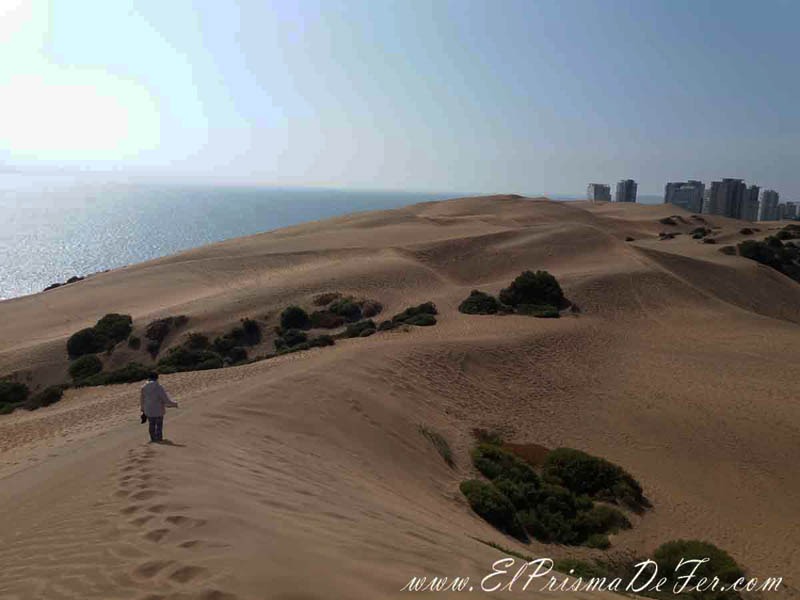
Nearby is the Ocean Rock viewpoint, a spectacular spot for viewing the sea and the sunset. However, it's important to be vigilant and watch your belongings, as some thefts have been reported in the area.
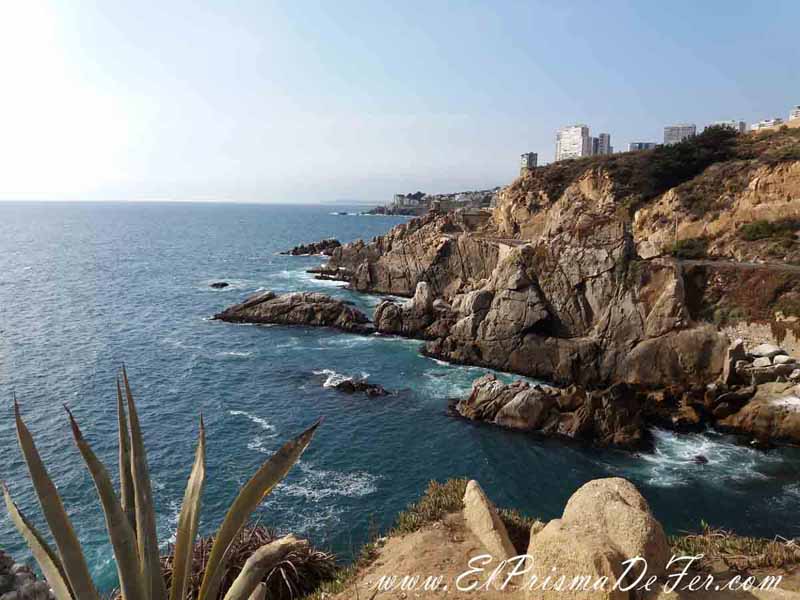
Personally, it was my favorite thing to do from Viña del Mar: there's a very marked contrast between the sand of the dunes, the sea crashing against the waves, and the city visible in the distance.
How to get to the Concón Dunes from Viña del Mar
The Concón Dunes are about 12 km north of Viña del Mar and are fairly easy to get to. The most practical way is to take a bus that runs along Avenida Borgoño, the coastal route that connects both cities. These buses can be boarded at various points in Viña del Mar and will take you very close to the dunes in about 30 to 40 minutes.
If you're backpacking, you can also hike along the coast from Reñaca. It's a 5-km walk that, although time-consuming, offers beautiful views of the ocean and the sea breeze in the background.
Once in Concón, the dunes are located right in front of the sea, next to the main avenue, so you can't miss them.
Reñaca Beach
Located north of Viña del Mar, it's probably the city's most famous beach. Its cool but intensely blue waters attract both locals and tourists, and in summer, the atmosphere is lively, with bars, restaurants, and nightclubs in the surrounding area. Reñaca is also known for its more "beach chic" vibe, where families, young people, and surfers mingle.
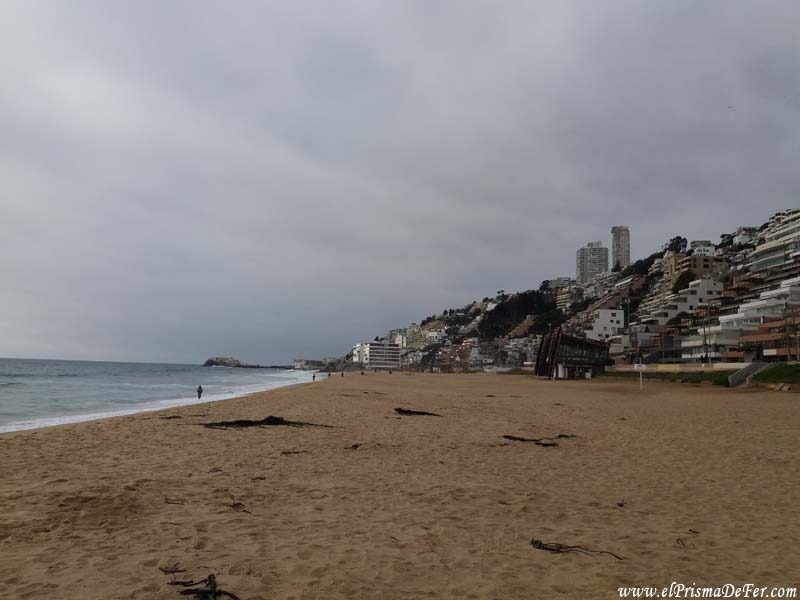
Where to sleep in Viña del Mar
Some travelers prefer to stay in Viña del Mar and visit Valparaíso during the day, as the city has a more residential and peaceful atmosphere. Viña del Mar has a wide selection of international chain hotels, rental apartments, and hostels near the beach, making it an attractive option if you're looking for comfort or traveling with your family.
However, I personally wasn't entirely convinced by Viña del Mar: I found it a bit run-down and lacking the charm of Valparaíso. The atmosphere may be different in the summer, with more activity on the coast and nightlife, but if your idea is to soak up art and cultural essence, Valparaíso is undoubtedly a better base for accommodation.
Are Valparaíso and Viña del Mar safe?
Valparaísois a very picturesque and lively city, but it is important to take precautions, especially at night and in the port area. Walking during the day through the hills and tourist neighborhoods like Cerro Alegre or Cerro Concepción is quite safe, with lots of people walking around and attentive locals.
However, at night, some less-lit streets further from the center can have a slightly more eerie atmosphere. It's recommended to avoid deserted areas, not display valuables, and stick to main streets. As in any tourist city, being alert and using common sense will make your visit more relaxing.
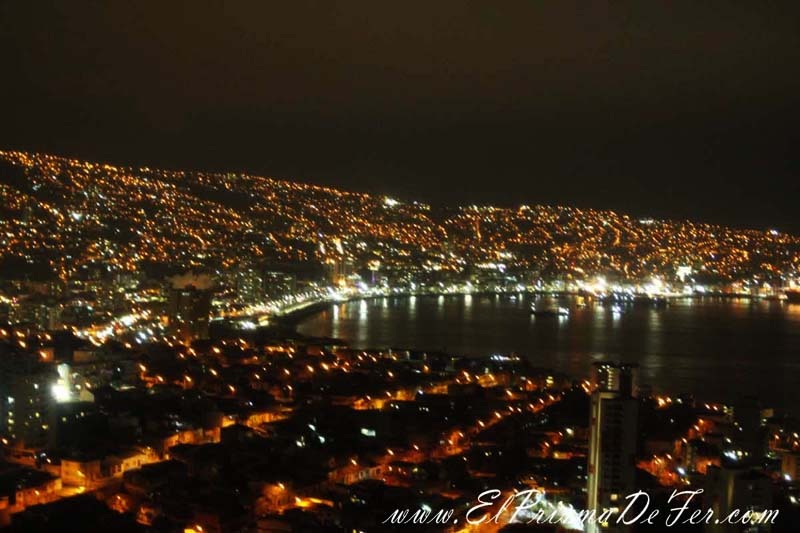
Viña del Mar is also quite safe to visit during the day, but as with most urban destinations in Chile, it's a good idea to take certain precautions. It's advisable not to leave valuables in plain sight, especially on beaches and viewpoints, where opportunistic pickpockets are common. At night, it's best to stick to the busiest areas and avoid walking alone in poorly lit areas.
How many days to stay in Valparaíso and Viña del Mar?
While many people take a day trip from Santiago, it's best to stay at least 2 or 3 days to calmly enjoy everything Valparaíso and Viña del Mar have to offer.
With a full day, you can explore the Alegre and Concepción hills, admire the most famous murals, ride one of the historic elevators, and end the day enjoying Valpo's bohemian nightlife.
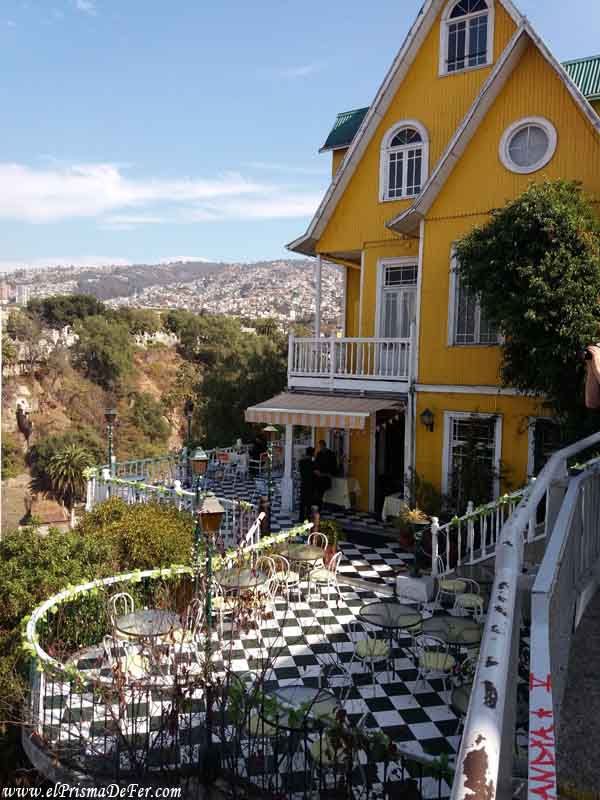
With two days, you can now add a getaway to Viña del Mar to enjoy its beaches, stroll along the waterfront, and visit iconic places like the Flower Clock or Wulff Castle.
If you have three days or more, you can spend time exploring other less touristy hills in Valparaíso, take a more comprehensive street art tour, try the local cuisine at various snack bars, or even visit a vineyard in the nearby valleys.
The combination of both cities is perfect because, despite being just minutes away, they show two very different faces of the Chilean coast: Valparaíso with its charming chaos and Viña with its orderly and beachy air.
Thoughts on my visit to Valparaíso and Viña del Mar
Valparaíso is a city that I found very picturesque and authentic. Its colorful hills, its somewhat chaotic but distinctive architecture, and, above all, its street art, make it a unique place.
Walking through its steep streets and discovering murals on every corner was one of my most enjoyable parts of the visit. It has a different vibe than Santiago and Viña del Mar: more bohemian, artistic, and even chaotic, in a good way.

Of course, the atmosphere varies depending on the area and the time of day. During the day it's a pleasure to get lost in the hills, but around the port or at night I noticed that the atmosphere became a little more murky and unsafe, so it's advisable to be cautious.
Even so, I think Valparaíso is a destination that deserves at least three full days to absorb its essence, visit several hills, enjoy urban art and, of course, take advantage of the proximity to also escape to Viña del Mar.
As for Viña del Mar, the truth is that it didn't quite convince me. Maybe it was because I visited it out of season, when there wasn't as much activity or the ideal weather to enjoy the beach, but even so, it felt a little neglected and run-down.
The coastal promenade and some of the buildings seemed neglected, and overall it didn't convey the same appeal as Valparaíso. Perhaps in the summer it feels more vibrant, but in my case, it wasn't a place I'd be eager to return to.

